I have only participated in 2 events organised by Risorgimarche and none of them recently. Luckily for us, Elke and Otto have gone twice, both times it was about concerts on the Potenza River. Here is what Elke suggests us: “Both tours were quite mountainous for my fitness class (there was almost only up, back only down), but they led over beautiful, quiet forest paths and were each rewarded with a unique concert in the middle of the Sibillini mountains.
This year, the short, 6.5 km hike started at the small village of Fiuminata.
The municipality of Fiuminata is a so-called scattered settlement, which consists of several villages such as Fiuminata, Castello and Pontile, and is located directly on the border with Umbria. The Potenza River has its source on the 1364 meter high Monte Vermenone and flows south of Porto Recanati into the Adriatic Sea. The first human finds date back to the Bronze Age, but Fiuminata gained importance as a Roman station called Statio Dubios, which was located on a branch of the Via Flaminia, which ran much further north along the Potenza River. In the 10th and 11th centuries, the area was ruled by the Counts of Nocera and in the following centuries the mighty defensive towers Rocca di Santa Lucia from the 11th century and today ruins arose, as well as the picturesque ruins of the Rocca Spindoli enthroned on a rocky peak .
But back to our concert: the organizers had reserved a small meadow directly on the river as a parking lot.
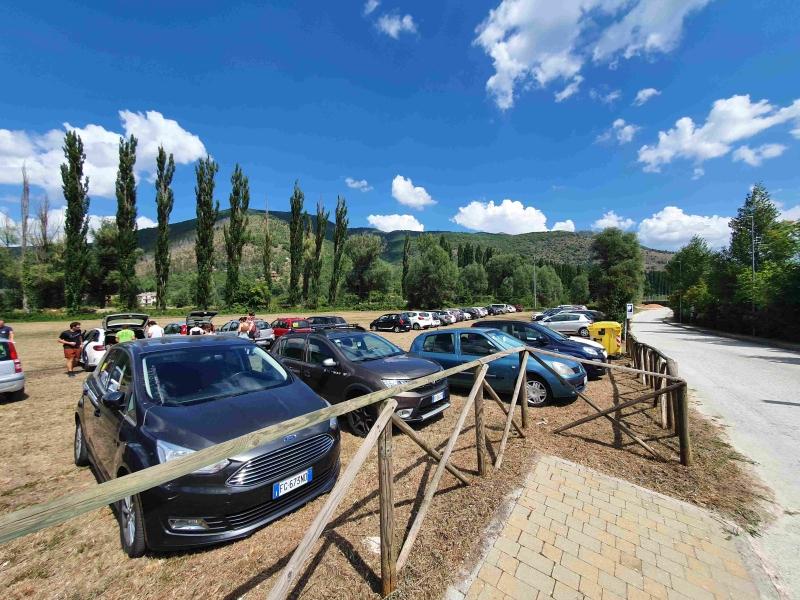
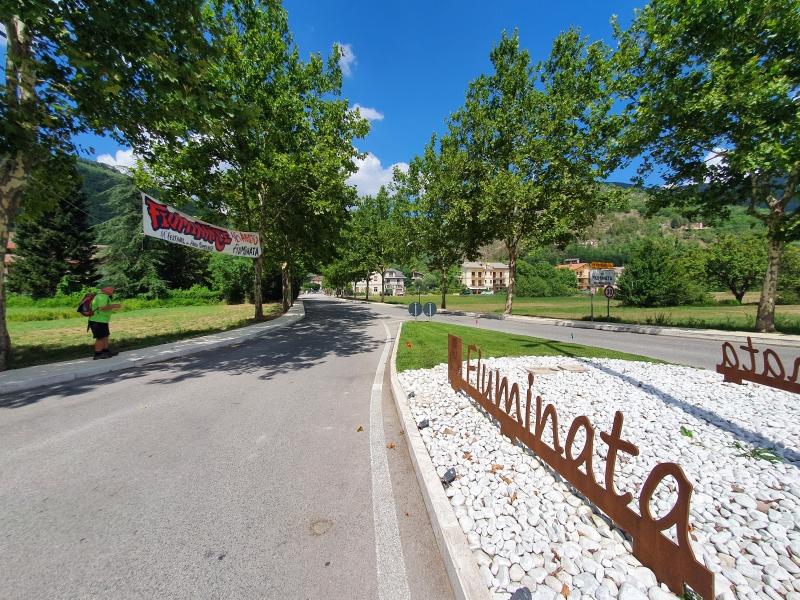
We still had some time and first strolled through the small town of Fiuminata with its beautiful town hall and the medieval church of Santa Maria Assunta.
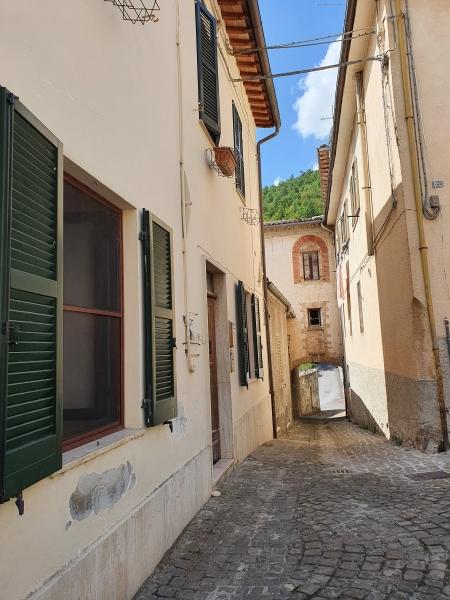
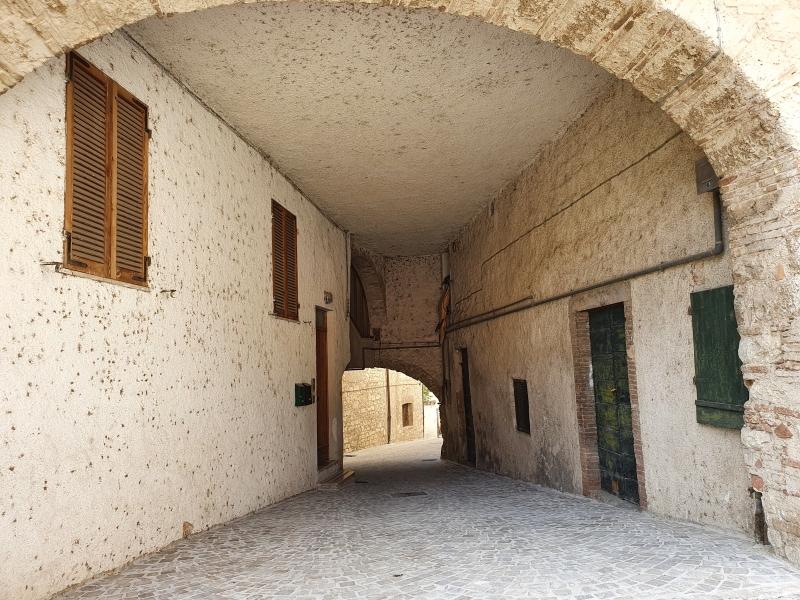
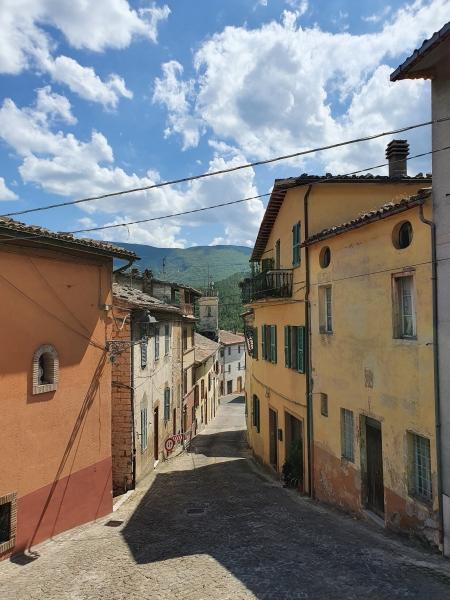

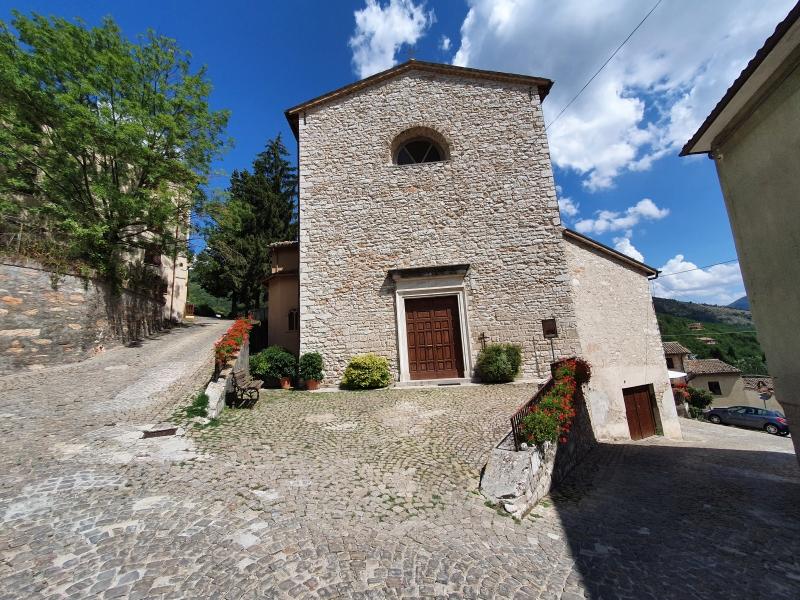
It was early afternoon and apart from a few construction workers there were hardly any people about the sleepy little borgo. We stopped at the Bar Centrale and then made our way to the concert site.
First we went through the floodplain landscape of the Potenza river, which was still quite flat and crystal clear here so close to the source and in some places even invited to bathe with stairs.

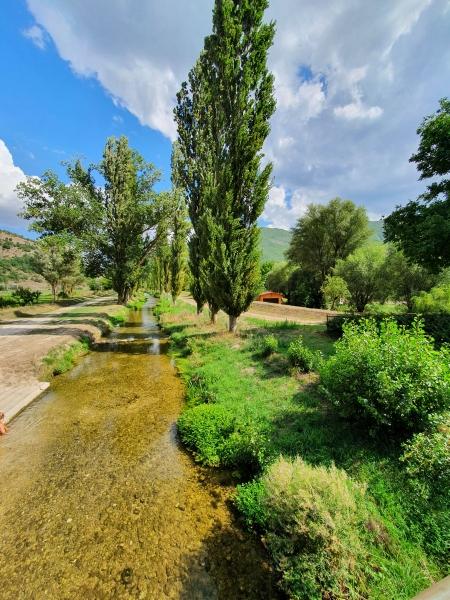
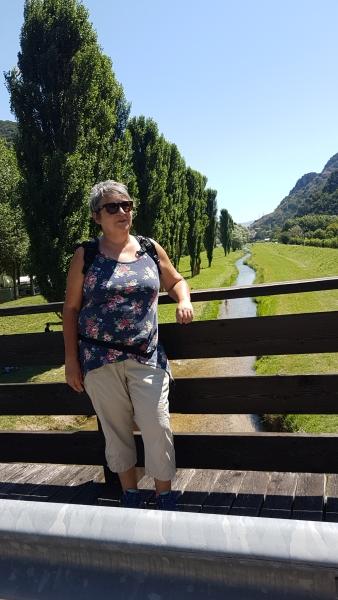

Then the path led through fields and vines to the district of Pontile, where we stocked up on liquids from the public drinking water fountain.
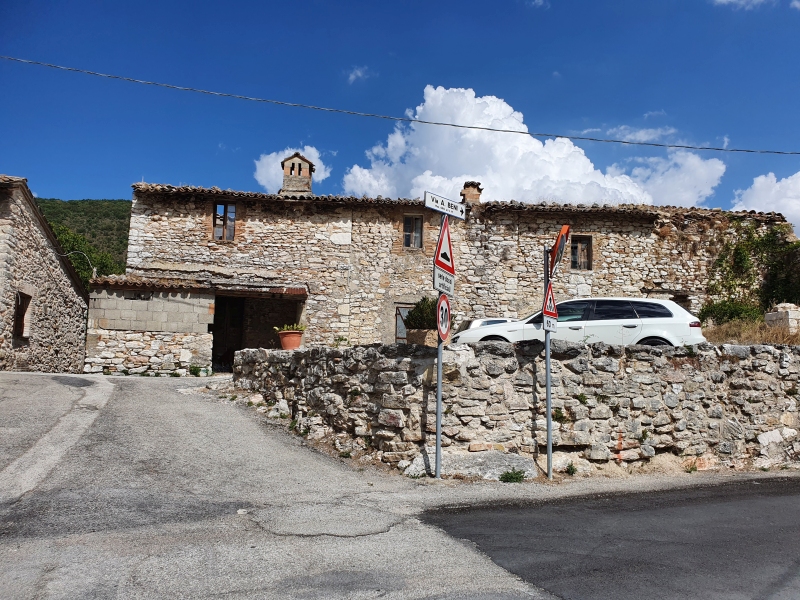
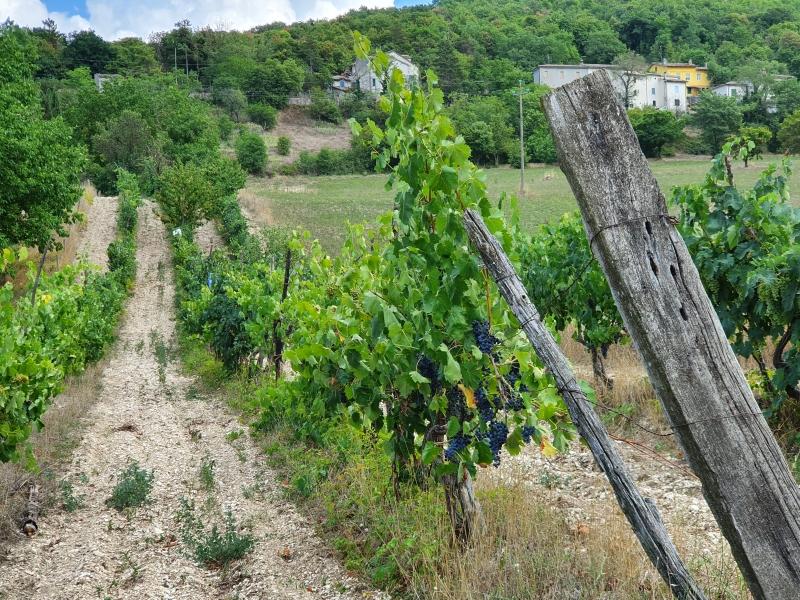
Behind Pontile we hiked up through sunken paths towards the concert field. Someone had decorated the path with small figures, boxes and mobiles, which gave the small children of the fellow hikers a lot of amusement on the ascent. Shortly before the meadow we had to slide down a steep gravel track. Luckily my husband is firm and offered to support me.
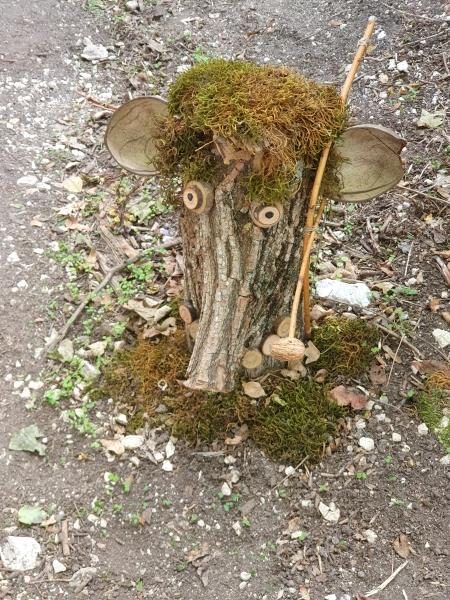
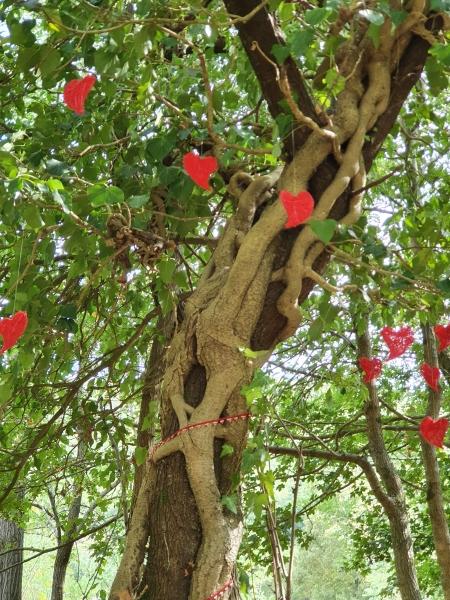
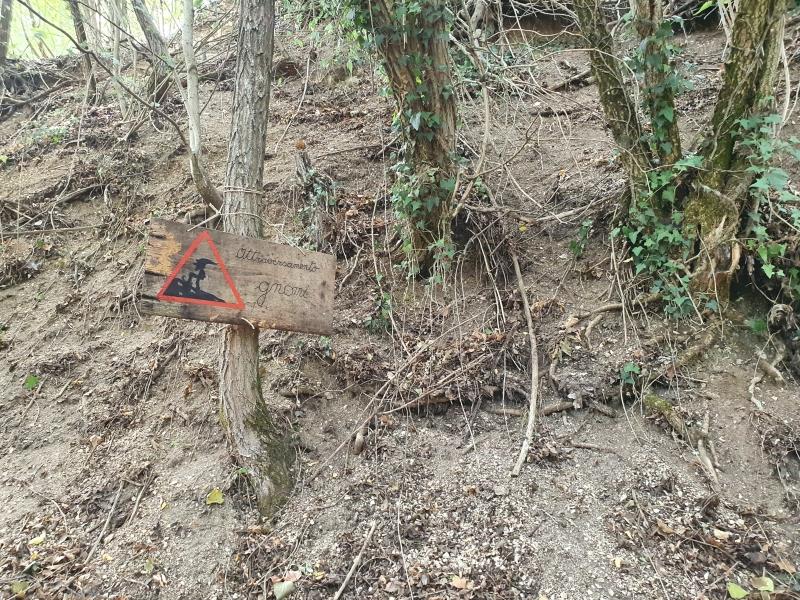
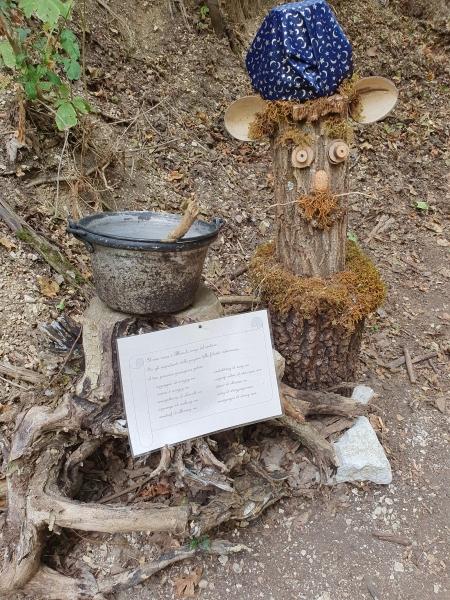
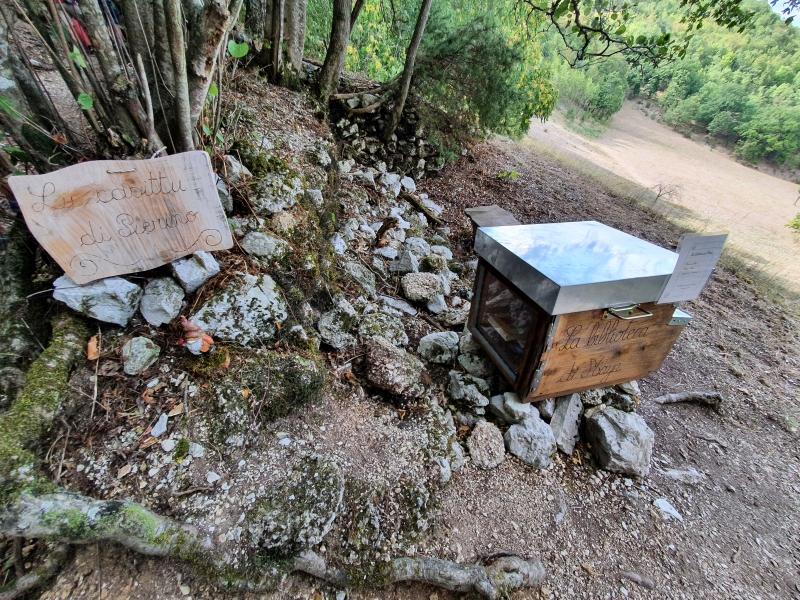
At the end of the path we entered the open space where Eugenio’s concert in Via di Gioa had just started: with little technology, an audience that had made itself comfortable on the meadow and a wonderful view of the wooded mountains around us.
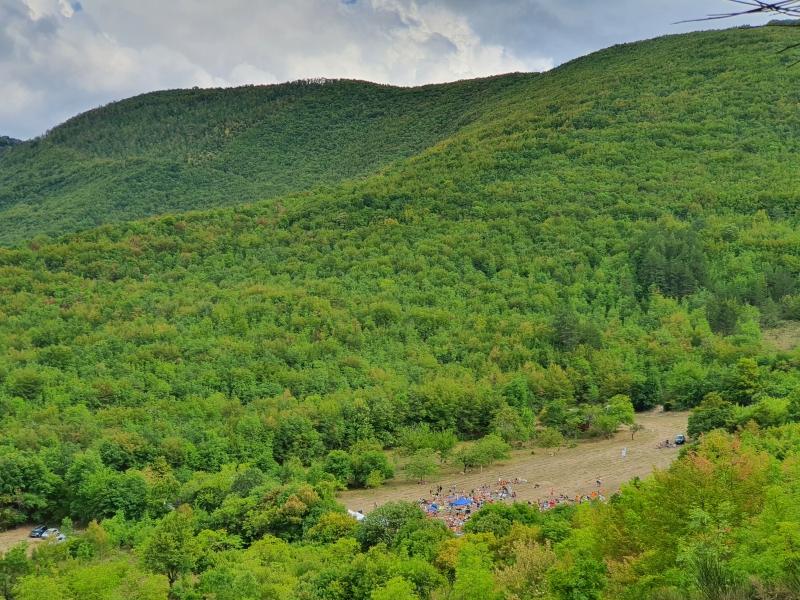
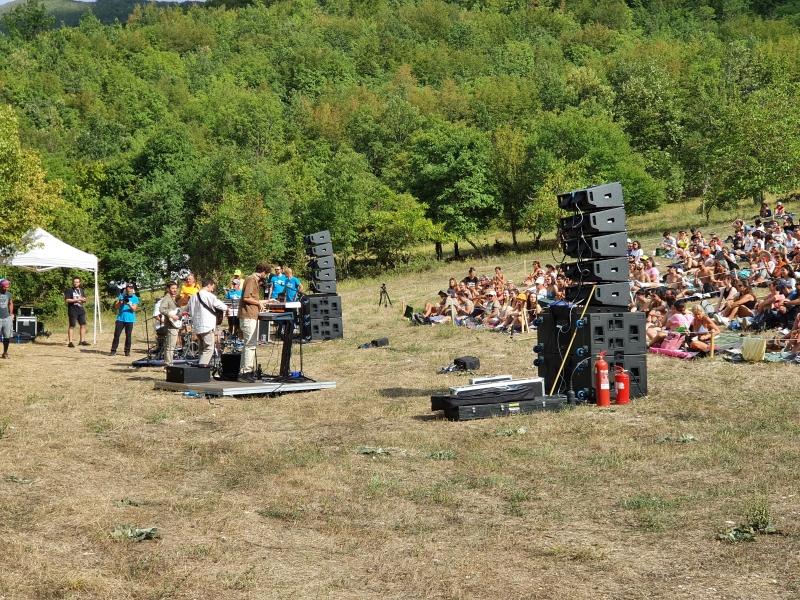

“It doesn’t get any better than that!” we thought and it really didn’t get any better: the band ended their performance as planned but without an encore because a storm was approaching. Everyone frantically made their way back, which fortunately led downhill on a wide, unpaved road. How soaked we all got on the short stretch!
The parking lot slowly turned into a muddy meadow. Quickly put on the dry spare clothes we luckily brought with us and let’s get out of the parking lot! What an emotional roller coaster ride: it had hardly rained so far this year, and the whole of Europe was suffering from the drought. So the rain was very welcome, but not at our concert!
There was still some time before dinner, so we drove to the nearby Sanctuary of the Madonna di Valcora, which was also closed due to the damage caused by the earthquake in 2016. Located where the village of Serracchiano stood in the Middle Ages, this early 15th-century sanctuary has been used over time as a hermitage. It contains frescoes by the 14th-century regional artist Diotallevi di Angeluccio.
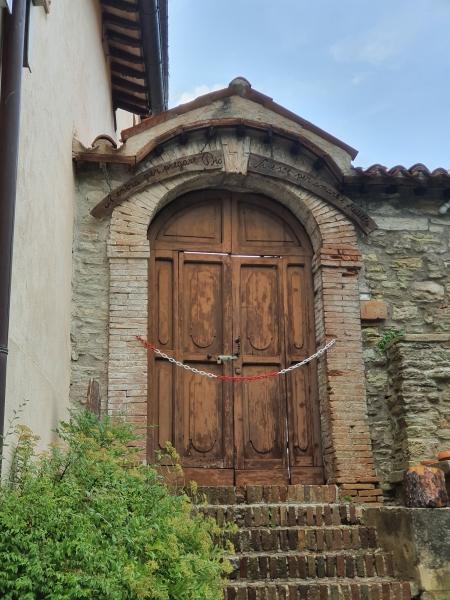
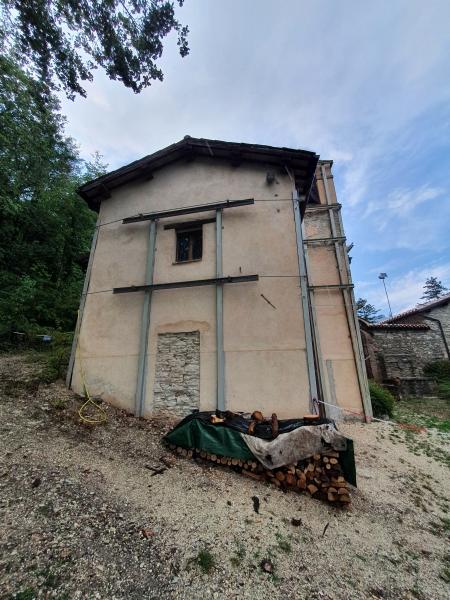

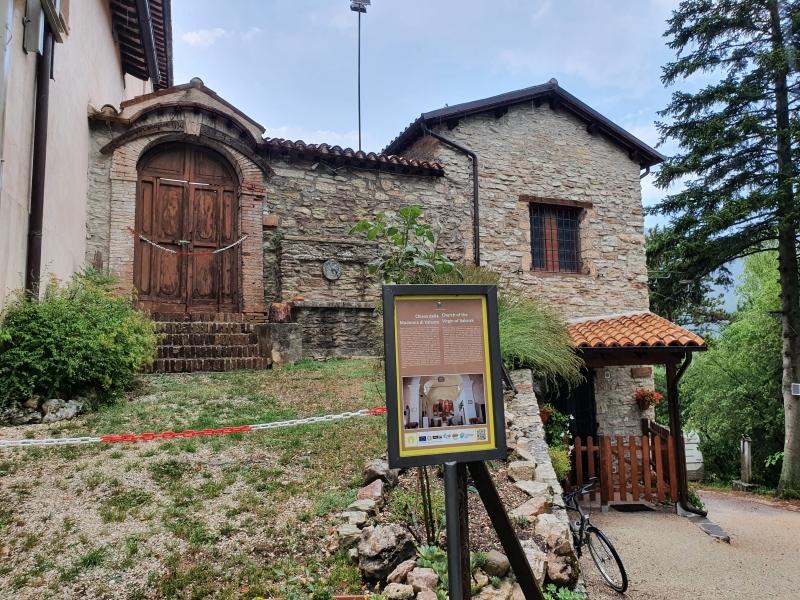
Then an ultra-short detour to the pretty little village of Castello with its church of San Giovanni Battista, a long city wall and a high tower towering over the village.
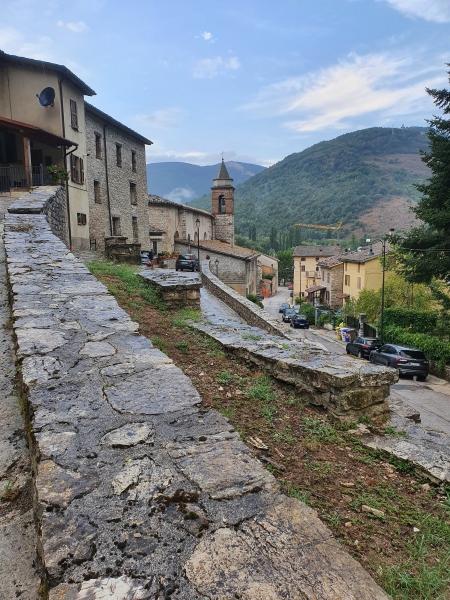

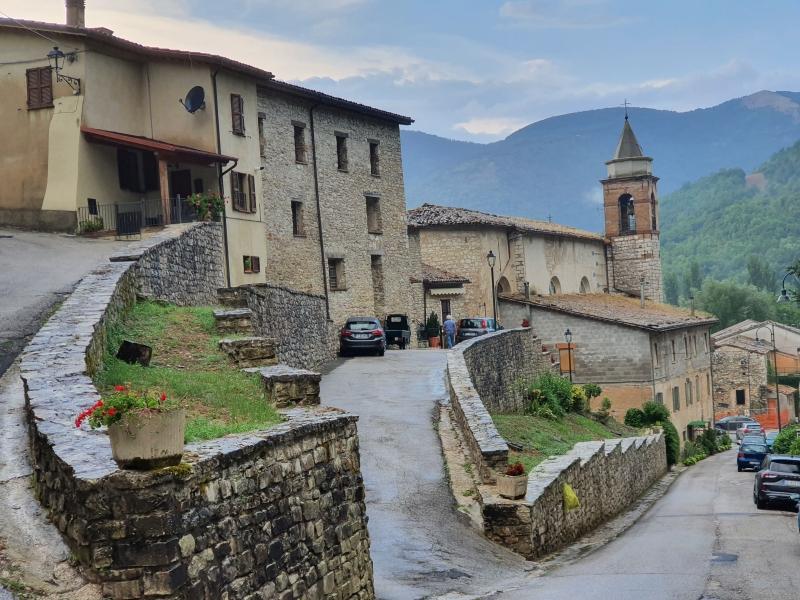
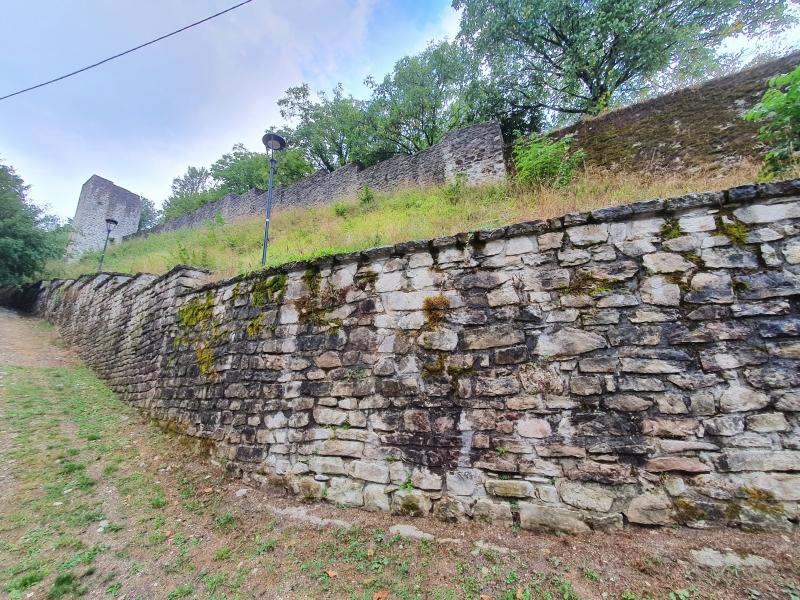
It was soon dinner time and so we drove to neighboring Pioraco, which I remembered very well from the last hike. Here the Potenza river runs right through the town. From the bridges you can spot big trout enjoying themselves in the clear, fresh river water.
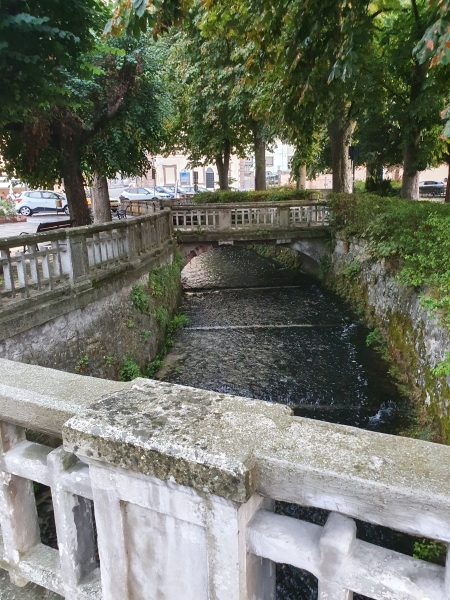


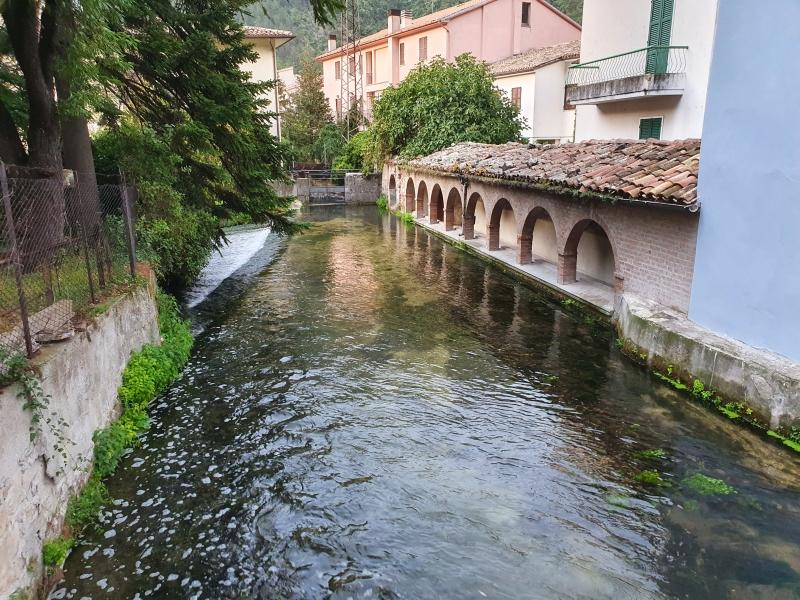
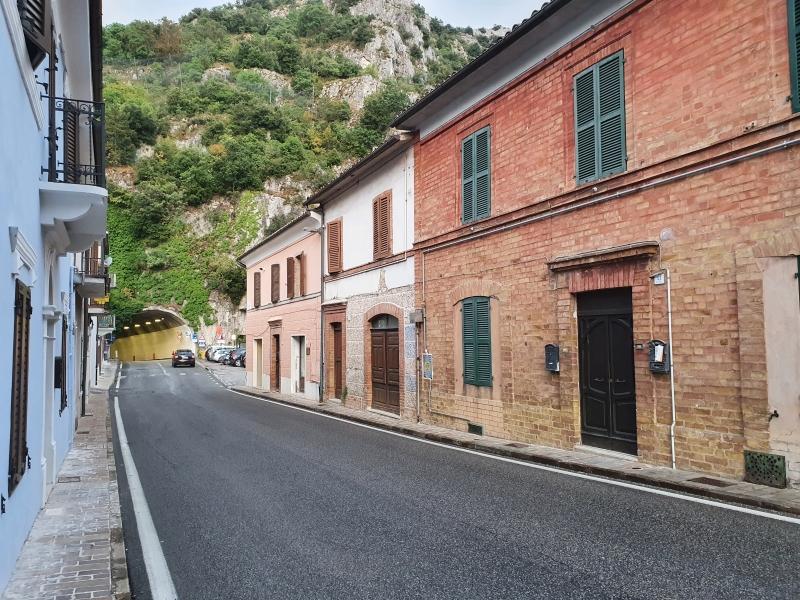
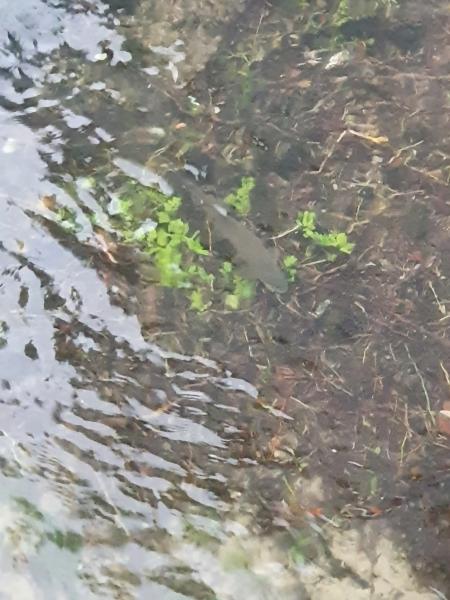
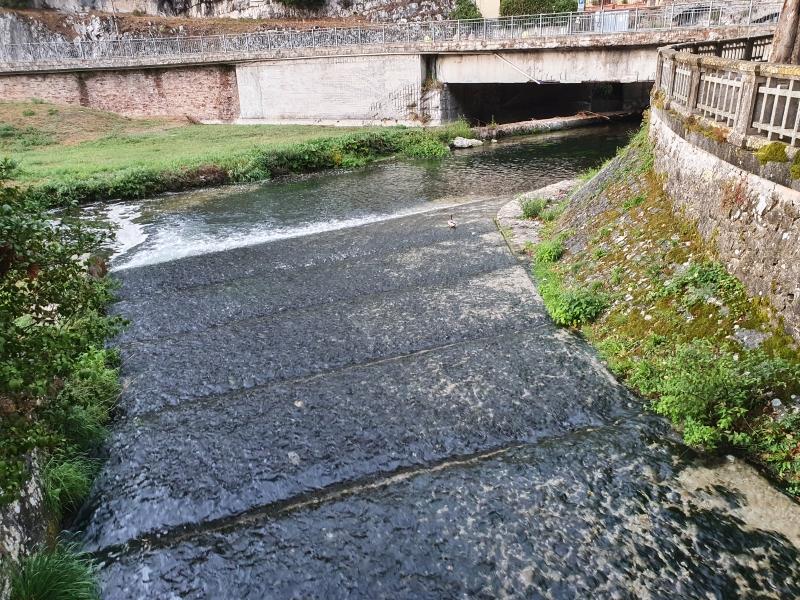
The Eremo della Madonna della Grotta is situated on the main road, dramatically embedded in the rocks. The church probably dates back to the 15th century, but legend has it that the natural cave at the back of the chapel was visited by pilgrims around the year 1000. By the way, there is a natural, underground cave system in the vicinity of Pioraco.
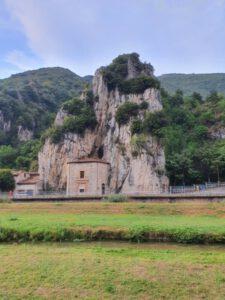

For dinner we went to the trattoria “Laila” on the outskirts next to the Cassette, the barracks of those who lost their homes in the earthquake. Here we let ourselves be spoiled with homemade ravioloni and grilled lamb before we start the return journey.
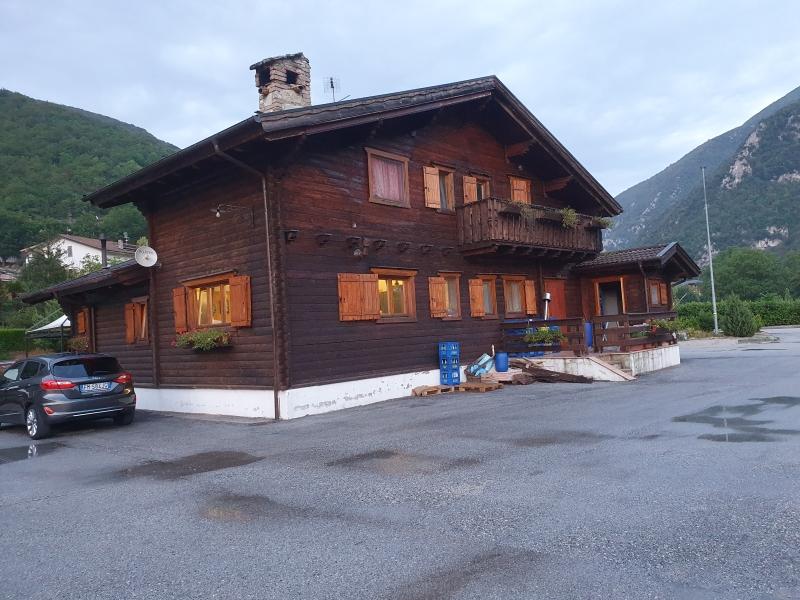
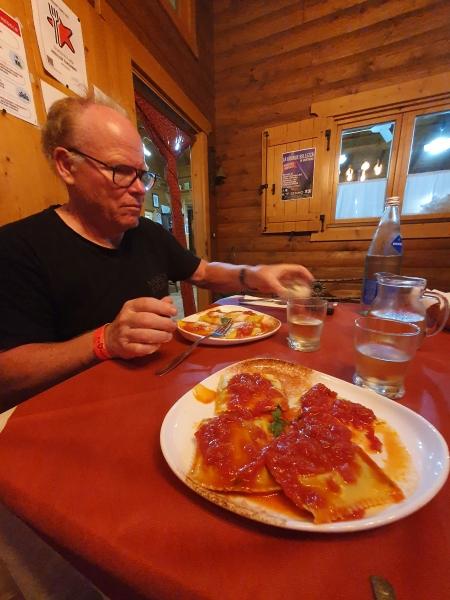

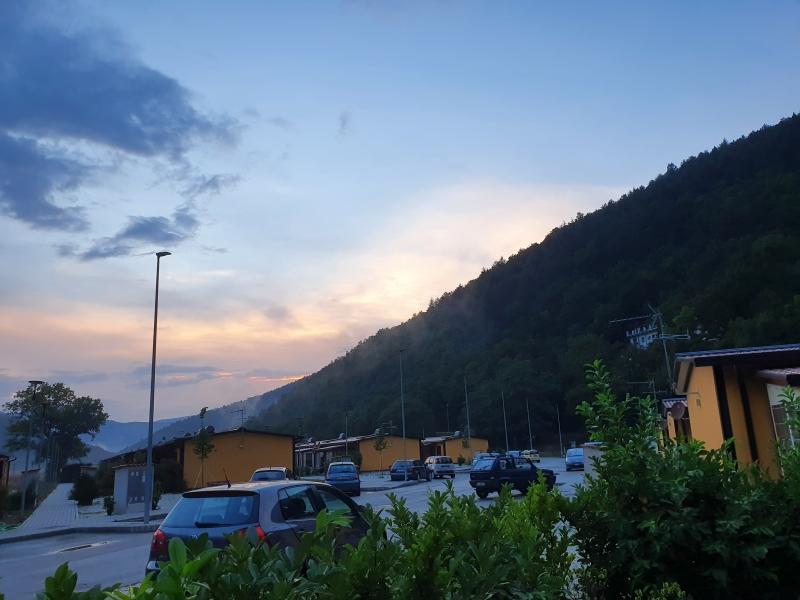
Background information:
This section of the Potenza River is just right for nature lovers: it is very idyllic and offers a dense network of an incredible number of hiking trails, most of which lead through the wooded slopes along the river valley (we already showed you the way in a previous post recommended to the stone monsters by Li Vurgacci).
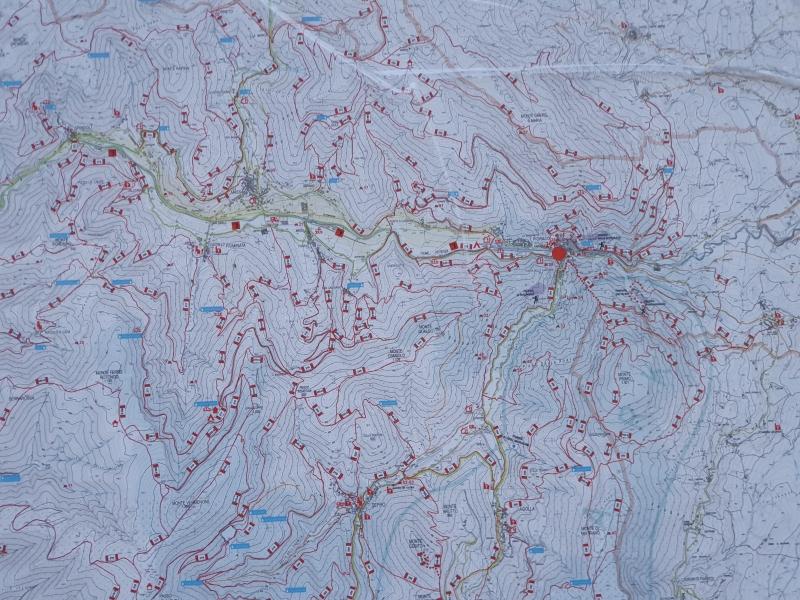
The area doesn’t seem overcrowded at all. Signposted routes also lead through Fiuminata and Pioraco as well as a “Giro dei 4 Passi” (circular route over 4 passes) for sporty cyclists, which leads over 67 kilometers and 700 meters in altitude. The Potenza River has a number of freely accessible bathing spots to cool off.
Well-managed campsites, for example near Pioraco and near Fiuminata, are mainly frequented by mobile homes, which are spread over the extensive area.

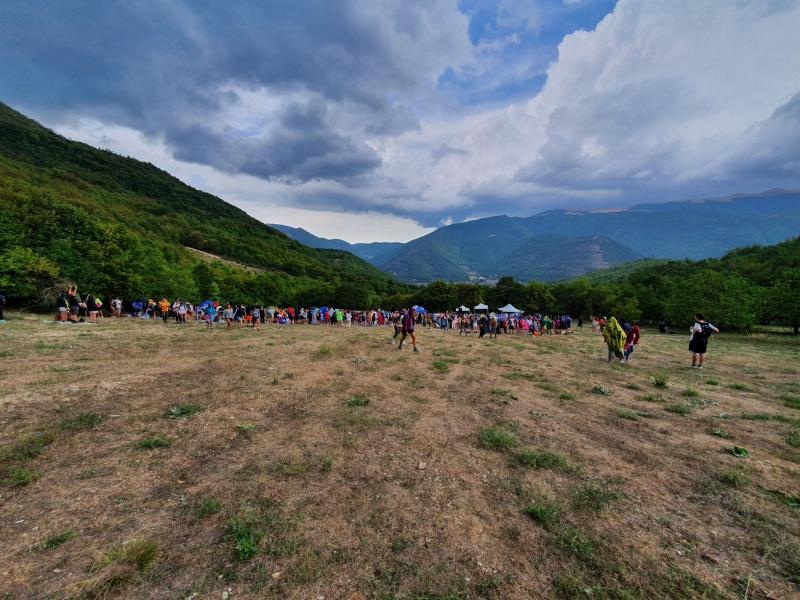

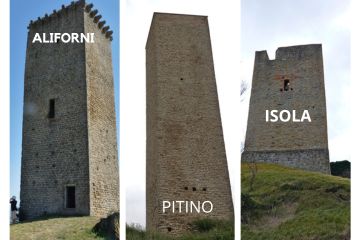
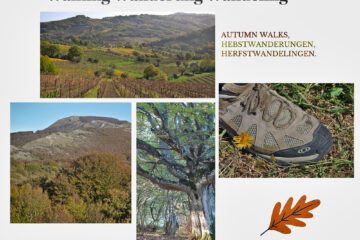
0 Comments